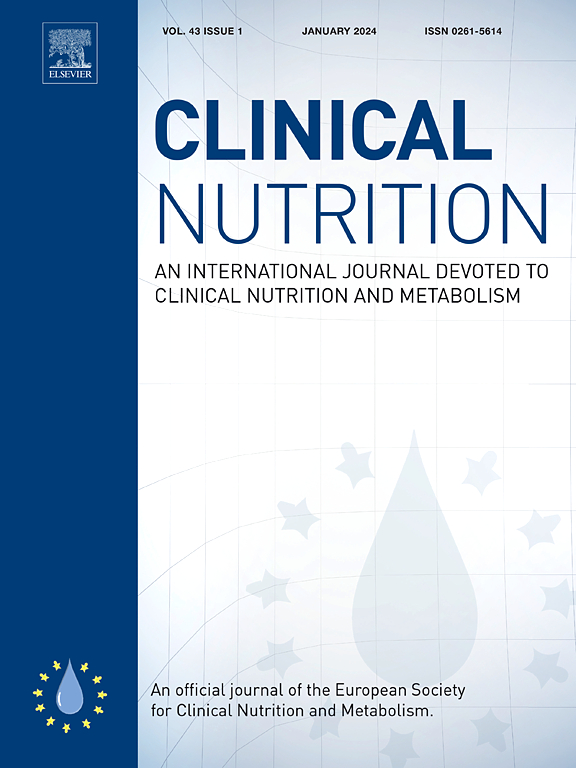Enteropancreatic hormone changes in caloric-restricted diet interventions associate with post-intervention weight maintenance
IF 6.6
2区 医学
Q1 NUTRITION & DIETETICS
引用次数: 0
Abstract
Background & aims
To explore enteropancreatic hormone changes during isocaloric-restricted dietary interventions and their impact on post-intervention weight maintenance.
Methods
253 individuals with overweight/obesity and prediabetes were randomly assigned to 25% isocaloric-restricted diets: Control diet, Traditional Jiangnan diet or Mediterranean diet. Serum hormones and clinical indices were evaluated at 0, 3 and 6 months. Body weight values were collected again 6 months after completing interventions.
Results
We observed decreased fasting and post-glucose load levels of glucagon, amylin, peptide YY, and glucagon-like peptide-1 (GLP-1) while increased ghrelin at three months after 25% calorie restriction (CR) of three dietary interventions, and most of these changes were sustained through the six month-treatment period. Interestingly, changes in appetite-inhibitory hormones glucagon, amylin and GLP-1 showed positive associations with body weight change while appetite-promoting hormone ghrelin showed an inverse association during intervention. Furthermore, subjects with more reduction in amylin and GLP-1, or more increase in ghrelin during intervention showed a greater increase in body weight after completing intervention.
Conclusions
CR intervention results in consistent hormone signatures regardless of dietary patterns. More changes in amylin, GLP-1 or ghrelin levels during CR are associated with poor weight maintenance after intervention, supporting that CR-induced hormone changes as biomarkers for predicting weight maintenance after intervention.
Trial registration
Clinicaltrials.gov NCT03856762.
限制热量饮食干预中的肠胰激素变化与干预后的体重维持有关
方法 253 名超重/肥胖和糖尿病前期患者被随机分配到 25% 的等热量限制饮食中:对照饮食、传统江南饮食或地中海饮食。分别在 0、3 和 6 个月时对血清激素和临床指标进行评估。结果 我们观察到,在三种饮食干预方法限制 25% 热量(CR)三个月后,空腹和葡萄糖负荷后的胰高血糖素、淀粉样蛋白、肽 YY 和胰高血糖素样肽-1(GLP-1)水平降低,而胃泌素水平升高,而且这些变化大多在六个月的治疗期间得以维持。有趣的是,在干预期间,抑制食欲的激素胰高血糖素、淀粉样蛋白和 GLP-1 的变化与体重变化呈正相关,而促进食欲的激素胃泌素则呈反相关。此外,干预期间淀粉样蛋白和 GLP-1 减少较多或胃泌素增加较多的受试者在完成干预后体重增加较多。CR干预期间淀粉样蛋白、GLP-1或胃泌素水平的变化越大,干预后的体重维持情况越差,这支持将CR诱导的激素变化作为预测干预后体重维持情况的生物标志物。
本文章由计算机程序翻译,如有差异,请以英文原文为准。
求助全文
约1分钟内获得全文
求助全文
来源期刊

Clinical nutrition
医学-营养学
CiteScore
14.10
自引率
6.30%
发文量
356
审稿时长
28 days
期刊介绍:
Clinical Nutrition, the official journal of ESPEN, The European Society for Clinical Nutrition and Metabolism, is an international journal providing essential scientific information on nutritional and metabolic care and the relationship between nutrition and disease both in the setting of basic science and clinical practice. Published bi-monthly, each issue combines original articles and reviews providing an invaluable reference for any specialist concerned with these fields.
 求助内容:
求助内容: 应助结果提醒方式:
应助结果提醒方式:


